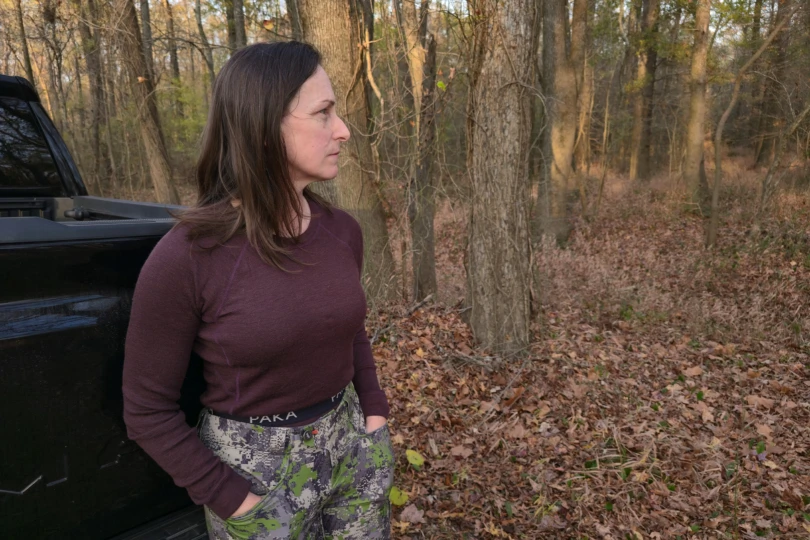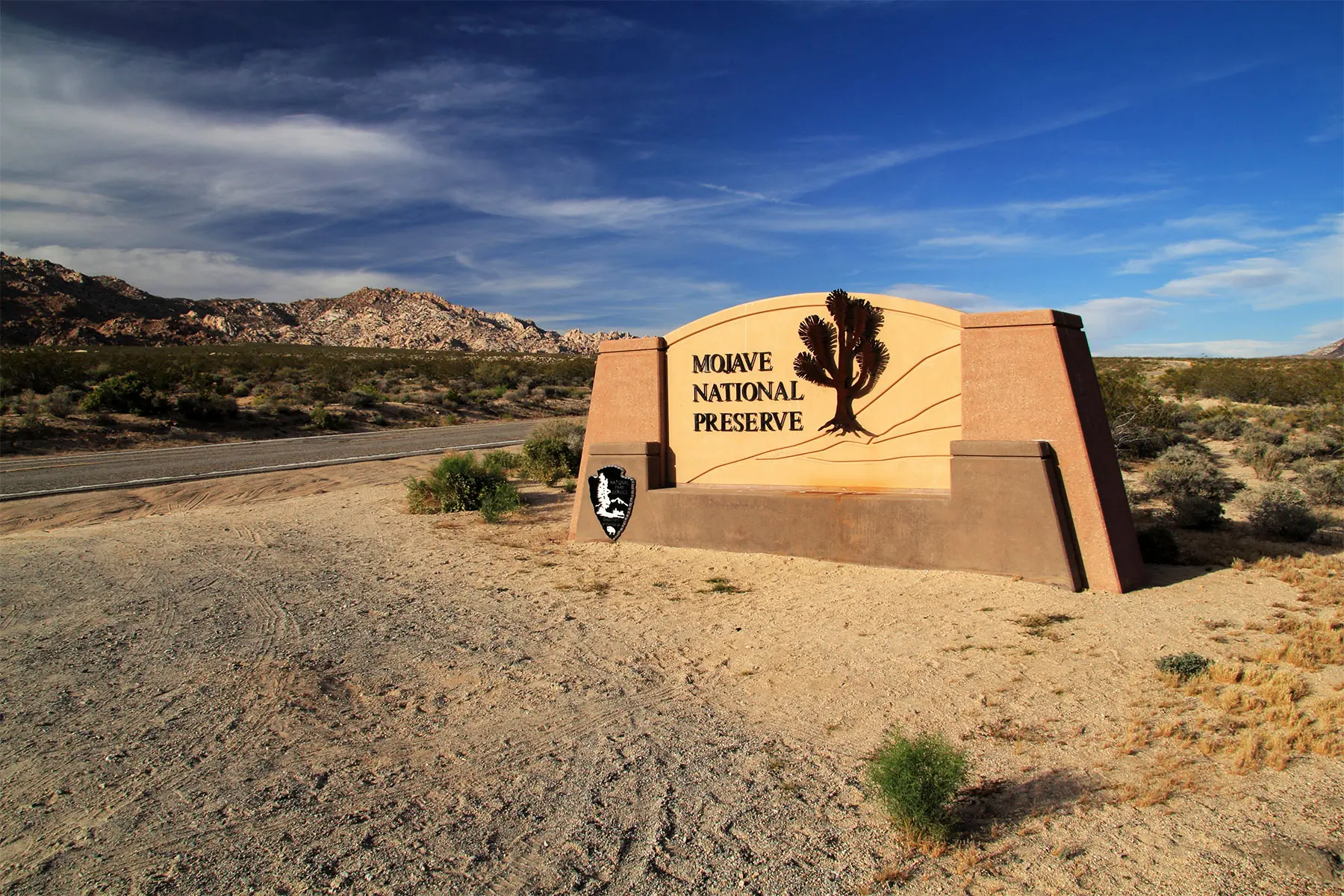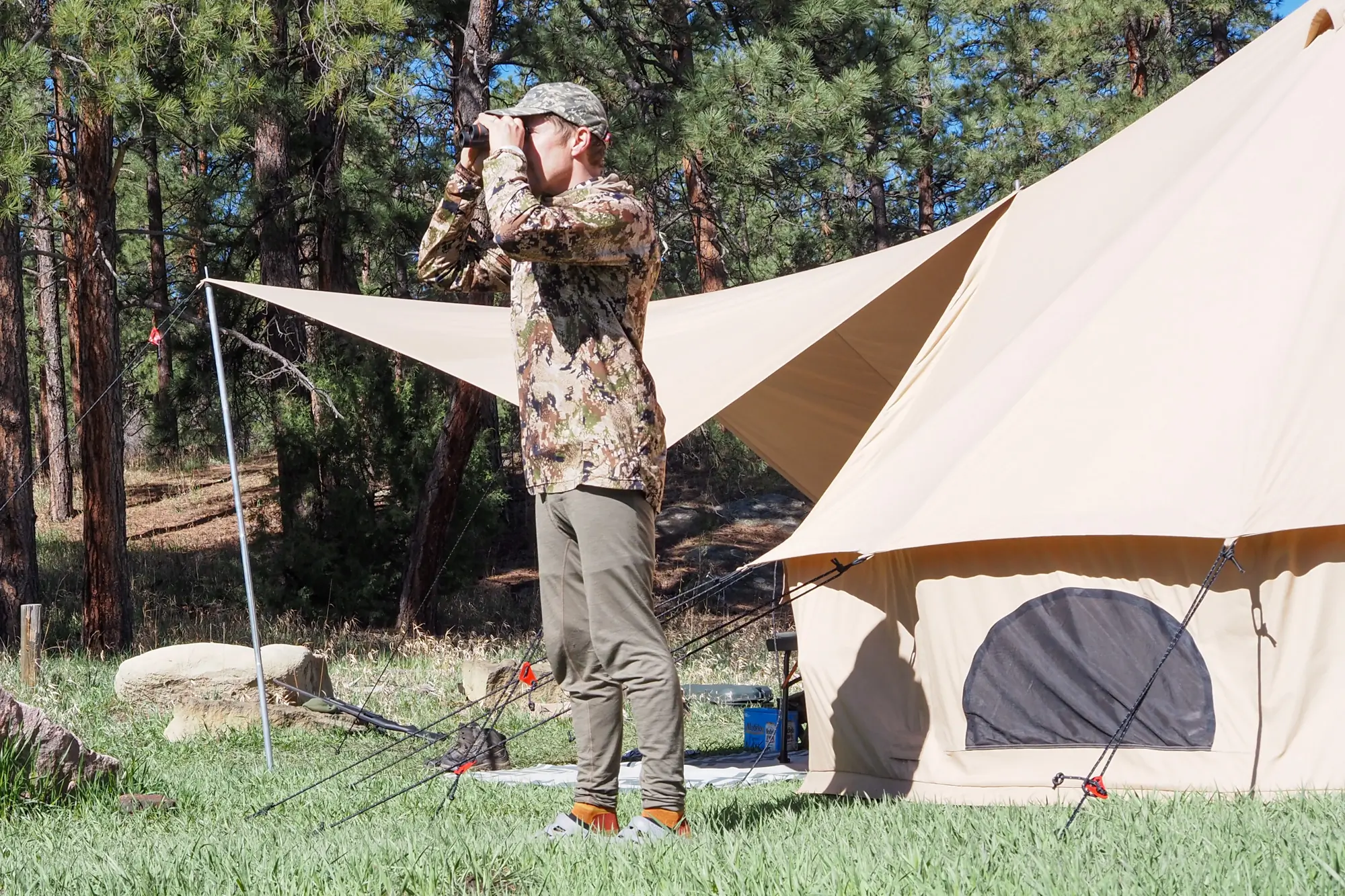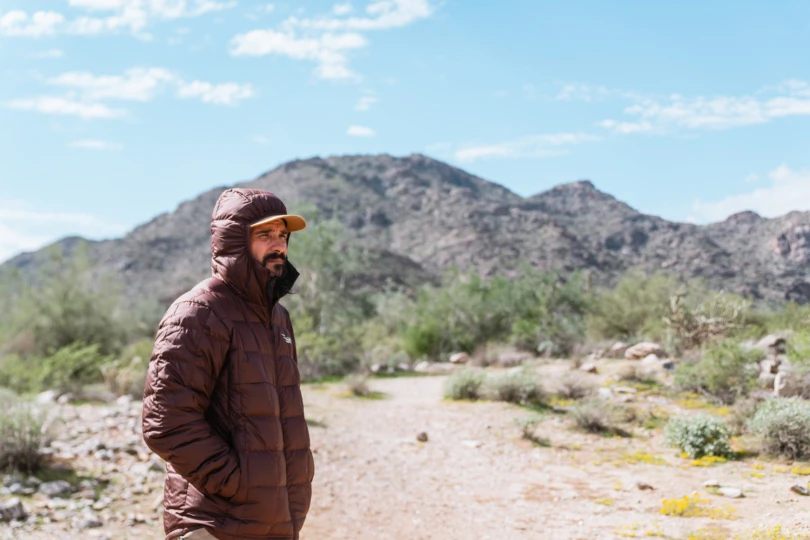Lead-based ammunition leaves behind residues in carcasses that are toxic to golden eagles and other species. Hunters can make a difference by choosing non-lead alternatives.
The golden eagle attempted a weak hop up the snow-covered bank. In the briefest moment, when it was airborne, I saw the clenched, bright-yellow feet. It was then I knew the type of poison that was likely filling this bird’s bloodstream: lead.
Specifically, it was the lead found in carcasses and gut piles of animals left in the woods, many of which are the remains of a hunter’s successful harvest.
For context, I’m a hunter — born and raised one in Wyoming — and I now live in Montana. I’ve put a lot of lead into the environment, but now I don’t.
This is why.
A Golden Eagle Found
In early January, my husband and I ventured up the Blackfoot Valley in Western Montana planning on cross-country skiing some closed logging roads and running our two bird dogs. We’d barely driven a mile off the asphalt when we came upon a small car stopped in the middle of the road.
The driver pointed to the barrow pit and at a golden eagle. That’s when the bird made a small jump to get away from our ogling and I saw its clenched talons. When it landed just a few feet away, it was standing on its knuckles, giant wings spread across the snow, head drooped low.
A garbled phone call with bad cell service to a Montana FWP non-game biologist got across what we had found. He asked us to try and catch the bird while he got the area’s raptor recovery center on standby to receive it.
A Golden Eagle Dead

Pulling off our jackets, we slowly approached the bird. As it started to struggle away, I placed my hand on its back just between its wings and lightly pressed down. The weakened animal just collapsed down into the snow, putting up no fight. My husband folded in its wings and picked it up, and we drove straight to Wild Skies Raptor Center in Potomac, Mont.
The bird was put on IV fluids for dehydration, fed carefully because it was starving, received chelation therapy (which entails a concoction of drugs to bind metals in blood), and started physical therapy to try to get its body working again.
Once broken down in an acidic environment like the gut of a raptor, lead messes up the central nervous system. This can lead to a host of problems, including starvation because the bird can’t function well enough to find food. And that’s exactly what happened. The raptor center also identified this golden eagle as an adult female, potentially 5 to 15 years old, and thus a critical bird to raising future eagles.
She died 9 days later.
How Lead Fragments Impact Wildlife

Hunters, this is on us.
Upon impact, lead bullets fragment and scatter throughout their target at varying degrees depending on bullet composition and shot placement. Even the most well-placed lead bullet shot through vital organs causes a bullet to lose some of its mass. These fragments are captured in the entrails that we often leave behind in the form of gut piles and sometimes whole animals in the case of varmints and lost game.
Non-lead alternatives like copper retain nearly 100% of their mass and often provide increased penetration, which is a good thing — especially if the bullet first impacts bone and hide. This means little to no metal is left in the meat or carcass.
A friend aptly described a picture of an X-rayed deer carcass that was harvested with a lead bullet looking like a constellation of stars due to the lead fragments spread throughout the body. This is where the potential for lead exposure to all consumers begins. Golden eagles and other scavengers feeding on hunter-killed carcasses and remains will consume those same fragments.
The History of Lead Bans and Birds
In 1987, the federal government began a phased ban on the use of lead for hunting migratory waterfowl. This came about when the U.S. Fish and Wildlife Service was sued by the National Wildlife Federation regarding spent lead shot left in marshes and wetlands by hunters.
The Federation claimed and won the case. Lead shot was indeed poisoning waterfowl, among other species. Ducks and geese feed on the bottoms of lakes, streams, and wetlands. These birds ingest gravel, which collects in their gizzard, to help digest food. And lead fragments were being picked up in the process, harming wildlife in a secondhand manner.
Lead bans exist in various forms across the country. Many state wildlife management areas and national wildlife refuges require non-lead for waterfowl and upland bird hunting. A handful of tribal governments like the Confederated Salish and Kootenai tribes in Northwest Montana require the use of non-lead shot on their land as well. In 2019, the entire state of California banned lead from hunting entirely. This stemmed from the connection to the declining wild condor population, which is now rebounding.
Lead regulations exist in select areas mandating what hunters must shoot for ecological purposes, but many areas don’t have these mandates. A lot of hunters still shoot lead for a variety of reasons. Many people are simply unaware of the impacts lead has. Others are aware but still choose not to change.
Personally, I made the switch.
Making the Switch
I hunted for years with lead ammunition because it’s what I was taught to use. I didn’t know about the impacts that lead fragments in my gut piles caused until over a decade into my hunting experience. After learning what my lead fragments could do to non-target critters, I knew I had to make a change.
For 8 years now, I’ve taken one to two big-game animals each season with copper bullets. Just 2 months ago, I filled my deer tag on a young buck, and his gut pile lies barely 5 miles from where we found this eagle, a distance she could have covered in minutes. So this golden eagle’s death feels extremely personal, both in our hands-on experience and the locale in which she too was hunting.
Maybe she sat atop the entrails of my deer feasting on the lead-free protein. She likely sat on many other carcasses in the surrounding area shot by lead ammunition, unknowingly eating enough fragments to kill her.
‘The Evidence Is Overwhelming’

In a 2020 paper published in The Journal of Wildlife Management titled “Widespread Lead Exposure in Golden Eagles Captured in Montana,” researchers found that of the 91 golden eagles studied, nearly all (94.5%) had elevated blood lead levels (which means greater than 10 μg/dL).
When blood lead levels are above clinical exposure (greater than 60 μg/dL), eagles may lose coordination and experience a host of other neurological and physiological disorders. The eagle I found had a blood lead level of at least 130 μg/dL.
Golden eagles aren’t alone in this. Bald eagles, red-tailed hawks, and other scavenging wildlife are at risk of ingesting lead.
“The evidence is overwhelming,” said Rob Domenech, lead author of this 2020 study. “As a whole, we hunters are littering ecosystems on a landscape level with lead-tainted gut piles and poisoning eagles and other opportunistic, scavenging species. I urge hunters to make an educated, thoughtful, ethical choice and use non-lead bullets for hunting.”
A Call to Non-Leaded Arms

We hunters work so hard to bring home the food that feeds our families. We train, we practice, we scout, and we spend beautiful days and weeks outdoors to bring home the most free-range, organic, and healthy protein on Earth.
Why add lead to our food when we have incredibly accurate and lethal alternative ammo options?
There are barriers to making the switch — cost, availability, unfamiliarity, etc. — but we have a history of going the extra mile for conservation and have for decades.
We must lead on lead.
Dear hunters,
You are my people. I ask that you please consider making the switch to non-lead bullets and shot. Do it for ecosystem health, do it because we are the core of conservation, and do it because these bullets are highly effective. And do it so that we can make the choice to switch, rather than have the government mandate it.
A friend visited the raptor center the day before the bird died and said, “Her eyes had fight, but her body didn’t.”
We are the source of this. And we can prevent this by choosing non-lead ammunition.






